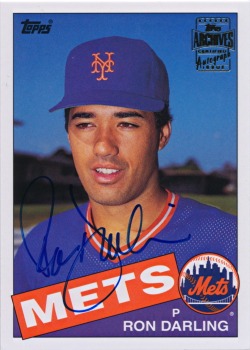Once underappreciated, now the real deal
Few people saw Matt Harvey as a future ace even as recently as this time last year. Wheeler’s talent was plain to see, but Harvey? He just wasn’t there. Even after his debut “too long to delay rookie eligibility, too short to make a Rookie of the Year case” season, there were many who were not ready to believe. Harvey’s still here, but his doubters have turned out to be the mirage.
Matt Harvey was drafted seventh overall in the 2010 amateur draft to indifference with a side of LOLMets. The consensus seemed to be that Harvey went too high and the Mets played it safe with a signable pick with less upside than some of the younger talent that was still available (like currently drug-suspended catcher Yasmani Grandal). Harvey’s supporters weren’t particularly vocal, but having a sensible, if not sensational, first round pick was an improvement over some of Omar Minaya’s previous drafts (see: “Kunz, Eddie”). I’m sure Harvey’s detractors switched over to bashing the Mets for picking a kid who didn’t even play high school ball in the next draft. They didn’t see the talent in Harvey that the Mets were banking on.

What I saw though were some pretty damn nice cards. Long-time readers know that draft day(s) is an exciting time for me as I scour the depths of eBay for any pre-pro cards from the newest members of the Mets organization. What started as a subset in the 1985 Topps set (best known for Mark McGwire’s first card) is now an entire segment of the hobby. Between various Team USA sets and inserts and All-American game cards and autographs, many of the top amateur players have an extensive checklist before they get drafted. For Matt Harvey, this included a few autographed jersey cards and some jumbo patch cards from one of his Team USA jerseys.

It didn’t take long for Harvey’s pro cards to materialize. Topps featured autographs from Harvey in 2010 Bowman Draft Picks & Prospects and Panini did the same in 2010 Donruss Elite Extra Edition.

As Harvey worked his way through the Mets’ system in 2011 and 2012, he became harder to ignore. His efforts were rewarded with an appearance in the 2011 Futures Game, with pieces of his jersey from the event first appearing in 2011 Bowman Draft Picks & Prospects. Only red swatches could be found in 2011, but the black and white secondary colors followed in 2012 Topps Pro Debut. Shortly after Pro Debut was released, Matt Harvey made his debut in the majors with an 11-strikeout statement that proved once and for all that he was for real.

Or at least it should have. With arguably the best pitching debut since Stephen Strasburg, Harvey should have been in the discussion with the great young pitchers in the game. Like R.A. Dickey a year earlier though, few outside the Mets fanbase could see the greatness that was clearly there. Autograph collectors at least could be forgiven; there hadn’t been any Matt Harvey autograph releases since the 2010 products. Harvey was on the checklist for autographs in 2011 Bowman Platinum, but the product released in July of 2011 only had this to offer:

As 2011 came to an end, there was no word on redemption fulfillment. 2012 came and went, but Topps could not get the cards, a pen, and Matt Harvey together in the same place at the same time. Now well into 2013, all we have is a tweet from Topps indicating that the cards may have been dropped off with Harvey during spring training.
Was this all a mass delusion? Could the stress of cheering on the Mets through collapse and utter failure have driven us to conjure up a savior who could lead the team to greatness? Why could an arm that could throw a high-90s fastball with pinpoint precision not be called upon to put ink to cardboard?

Our fears were put to rest when Panini released 2012 National Treasures in, um, February of 2013. This product, one of their best half-licensed baseball releases to date, included Matt Harvey’s autographs on cards (with pieces of his ’89 throwback jersey), on stickers, and on manufactured fabric. The demand for these autographs was so great that the base versions (each numbered to 99) initially sold in the $20-80 range. Harvey then went on to win his first four starts in such grand fashion that he was mentioned alongside some of the greatest pitchers in Mets history. One of them, Dwight Gooden, then bestowed Harvey with the moniker “The Real Deal.”

The world has finally accepted Matt Harvey as no mere figment of the imagination or hallucination brought on by whatever is in the air in New York City. And now the world is buying up his autograph cards in a frenzy, pushing the price of even his most common autographs over the $80 mark. If you don’t already have a Matt Harvey autograph, you probably can’t afford one. And don’t bother looking in any current Topps products, they can’t even get him to sign cards from 2011. They do have some jersey and patch cards though, so it’s not like they don’t acknowledge that he exists. Maybe MLB’s appointed one true card manufacturer has become invisible to Matt Harvey.
Update:
It only took two years…























Recent Comments